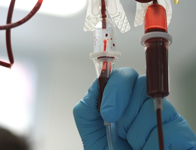AUSTRALIA does not need to screen baby boomers for hepatitis C infections because we already have high diagnosis rates, according to two experts.
The US Preventive Services Task Force has recommended screening for hepatitis C virus (HCV) in all high-risk people as well as offering a one-off test to all adults born between 1945 and 1965 — the baby boomer generation. (1)
The new US recommendations are based on the results of two systematic reviews of screening for and treatment of HCV infection in asymptomatic adults. They showed that the most important risk factor for HCV infection was past or current injecting drug use (IDU), and receiving a blood transfusion before 1992.
In the US the baby boomer generation were more likely to be diagnosed with HCV infection, possibly because they received blood transfusions before the introduction of screening in 1992 or have a history of other risk factors, particularly IDU.
The Task Force also said many people with HCV infection were unaware of their condition.
Professor Simone Strasser, chair of the Digestive Health Foundation, the educational and professional development arm of the Gastroenterological Society of Australia, told MJA InSight that the majority of Australian HCV infections were the result of IDU, often “decades ago”. (2)
Professor Strasser said that despite the similarities between the Australian and US HCV populations, the US Task Force baby boomers recommendation was unlikely to be adopted here because the diagnosis rate in Australia was much higher than in the US.
“We have a much greater proportion of people who actually know they have a diagnosis of hepatitis C than they do in the US”, Professor Strasser said.
However, she said many of people diagnosed with HCV had not come forward to receive treatment for a variety of reasons.
“They may be asymptomatic. They may also have misperceptions about both the curability of HCV infections and also about the toxicity of the treatments”, she said.
Professor Strasser said Australia had implemented a strong public awareness program promoting the risk factors for HCV, something that had not been so prominent in the US.
However, those who had been living with HCV, sometimes for as long as 20 years, without receiving treatment, needed to come forward, she said.
“Changes have happened. We are much better at assessing the extent of liver disease with non-invasive methods, such as FibroScan (transient elastography). We rarely do liver biopsies these days.
“Treatments are changing. We are moving to shortened treatment courses, more effective treatments, and interferon-free treatments, with minimal side effects.
“Rates of curability are increasing”, she said.
Ms Helen Tyrrell, chief executive officer of Hepatitis Australia, said the US Task Force baby boomer recommendation was in line with an earlier shift by the US Centers for Disease Control (CDC). (3)
“When the CDC first recommended the screening of baby boomers in the US for HCV we were asked if we would like to see the same approach here”, Ms Tyrrell told MJA InSight.
“Our answer at that time was that we had doubts that this approach was the best use of limited health dollars as the diagnosis rate in Australia was much higher than in the US and indeed many other countries too.
“We have a relatively high rate of diagnosis of hepatitis C at around 85% — this compares to about 30% in the US and an even lower rate of about 20% in the UK”, she said.
“Australia has a hepatitis C testing policy which has been developed by experts taking into account the Australian context. (4)
“In comparison, HCV treatment rates in Australia are very low and in our view government funding would best be directed to help improve treatment uptake.
“Unless treatment [rates are] significantly improved, deaths from HCV, which already exceed those for HIV, will continue to climb year upon year”, Ms Tyrrell said.
1. Ann Intern Med 2013; Online 25 June
2. HIV, viral hepatitis and sexually transmissible infections in Australia: Annual Surveillance Report 2012
3. CDC MMWR 2012; 61(RR04): 1-18
4. National HCV Testing Policy 2012

 more_vert
more_vert